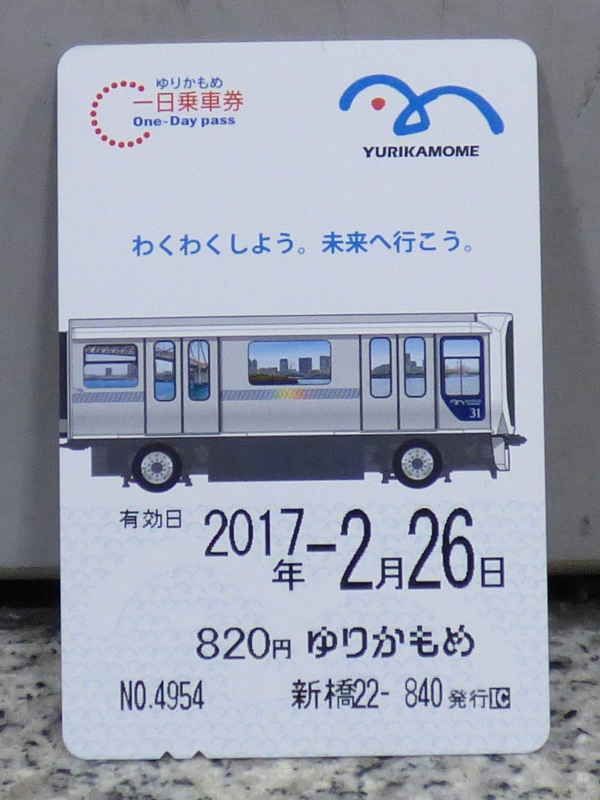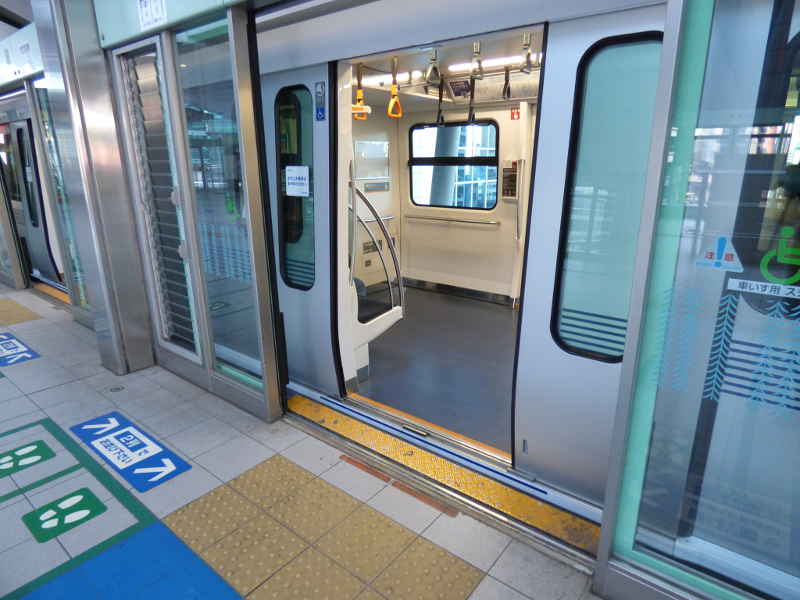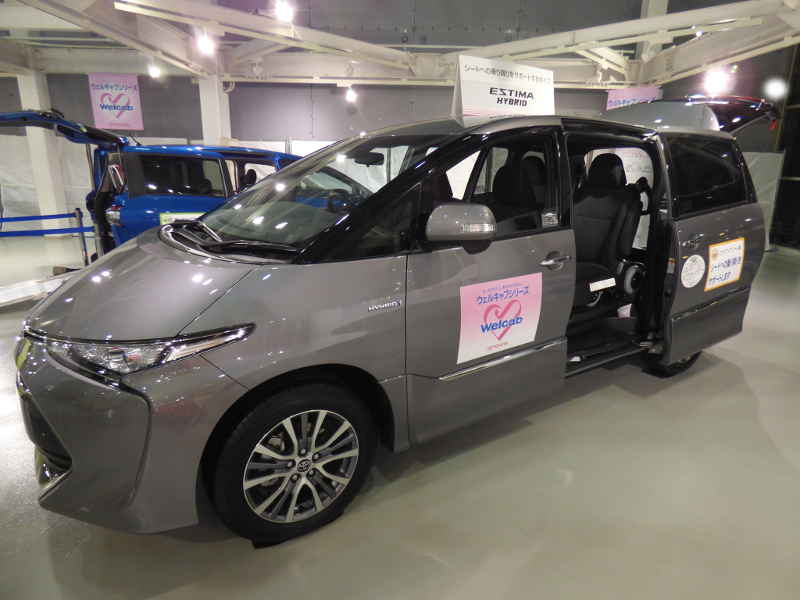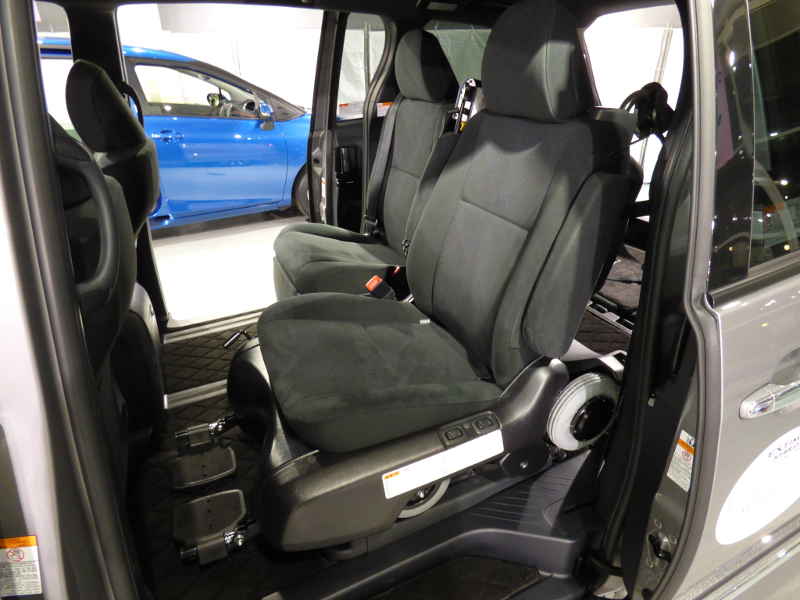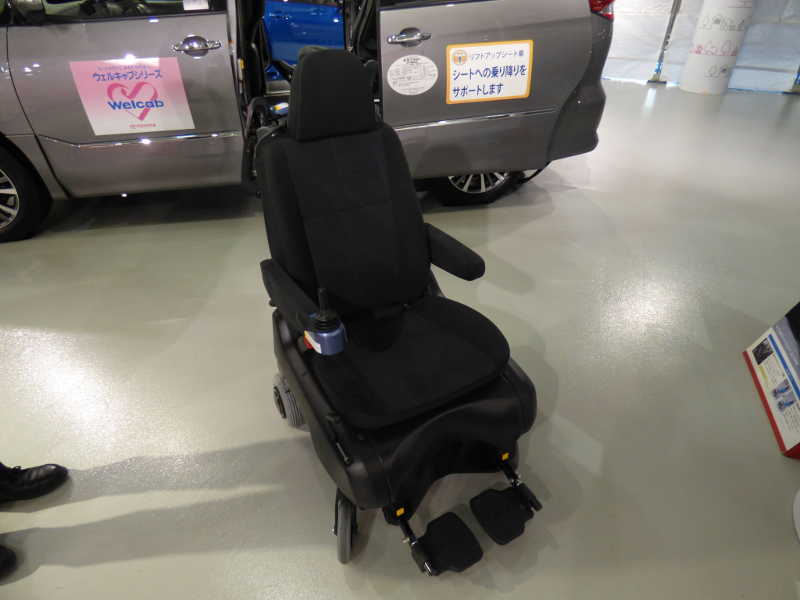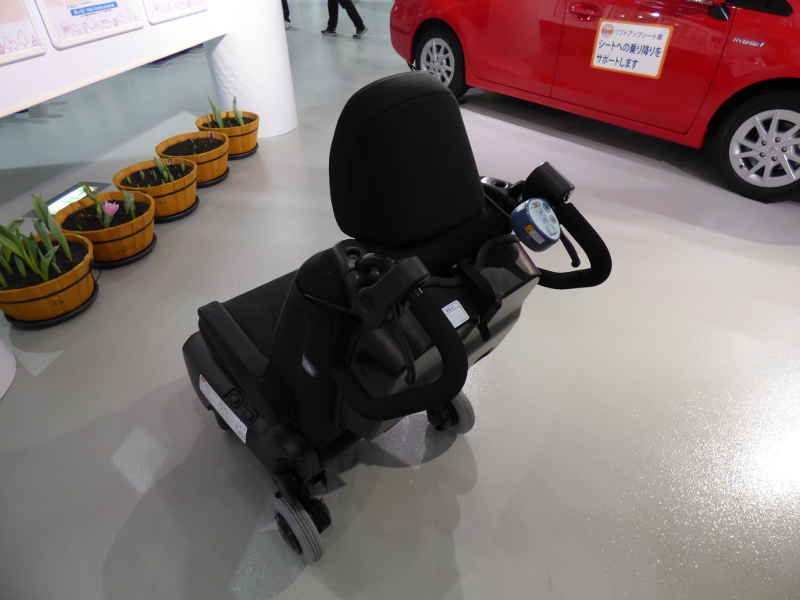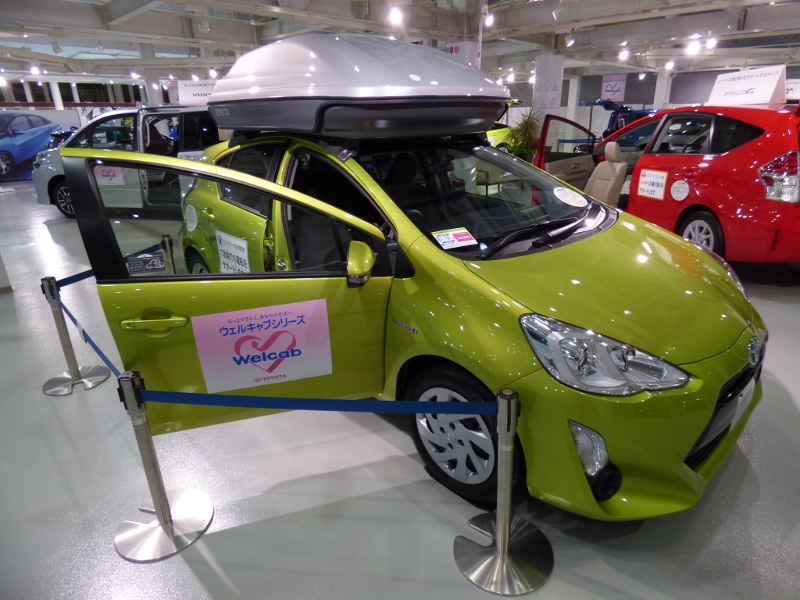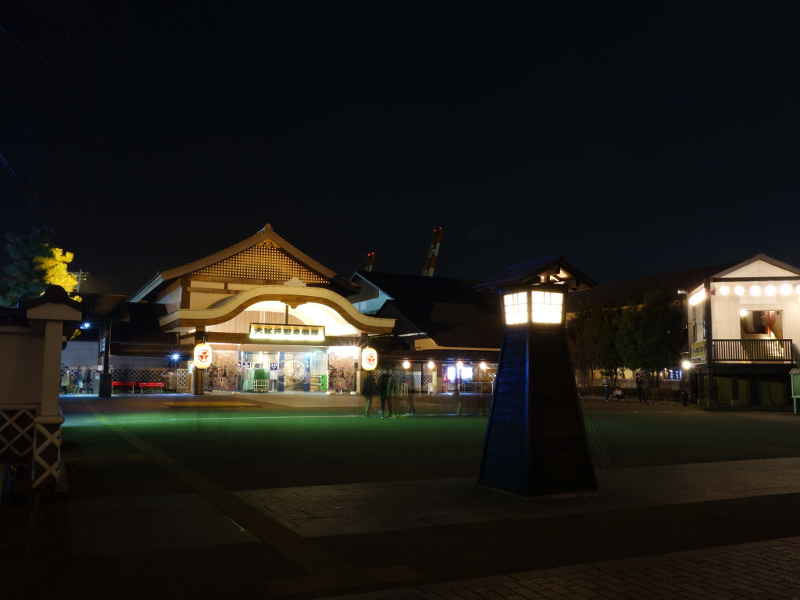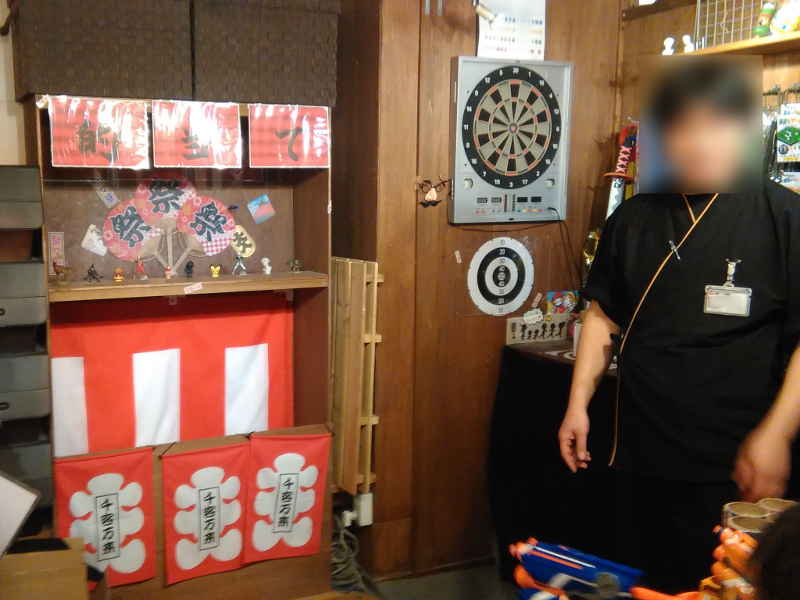Introduction
The Accessible field work extends to the Odaiba area. One of the members, A.S., reports. Through the field work, the accessibility of trains and stations was checked and several interesting and candidate facilities for further investigation were viewed.
Yurikamome
Odaiba’s city design is spacious, because the area has been recently developed. On the other hand, sights to be seen are further away from each other, compared to those in historic areas.
The Yurikamome line is useful from this point of view. The trains run every three to five minutes during the day on weekdays and every four minutes during the day on holidays. Major facilities are near to the Yurikamome stations. The platforms and the ticket gates in each of the stations are connected with an elevator. Almost all the gates are connected to the ground level with elevators or to nearby facilities flatly on pedestrian decks. Each station has a restroom with wheelchair access inside the gate.
A one-day ticket for Yurikamome was purchased to enter at the Shimbashi station for the field work. The ticket is a magnetic card and its size is 3.35 inches (85mm) by 2.26 inches (57.5mm). It can be taken home after use and kept as a memorial.
What was particularly noticeable during this ride was that there is very little gap or difference in level between the platform and the train floor.
The gap between the platform and the train is really little, seemingly because the track inside the station is straight. A yellow “step-eliminating ramp” makes up a step where the train floor is a little higher than the platform. There should be no danger of the wheel running off, because the ramp is as wide as the platform door.
All stations except Shimbashi, Ariake and Toyosu are basically unmanned. Assistance and arrangement for stoppage time will be available by calling for help on the interphone.
The train on the photo image is equipped with a dedicated space for wheelchairs, which will be more comfortable than a space made by folding seats.
MEGAWEB Toyota City Showcase
Toyota City Showcase in the theme park of Toyota cars, called ‘MEGAWEB’, displays Toyota-branded current models. Welfare vehicles were viewed in particular in this field work.
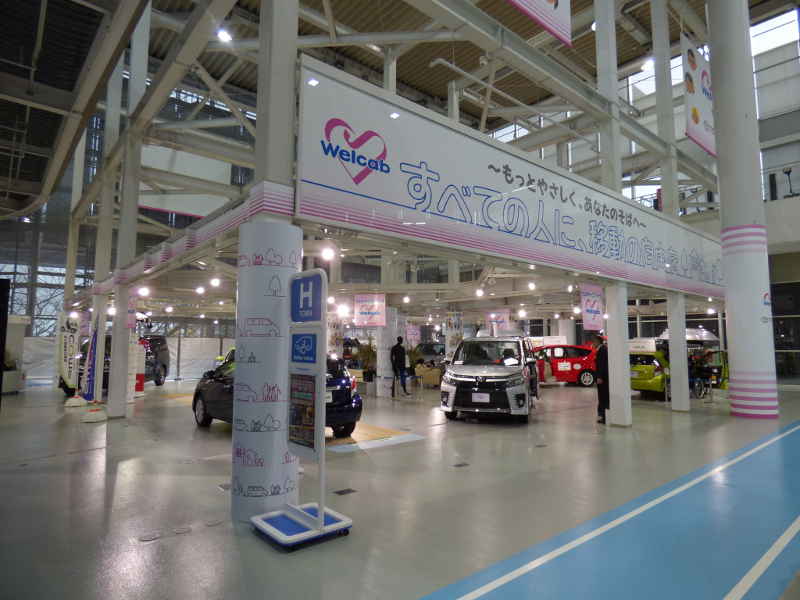
他This seems to be one of the places which display the largest number of welfare vehicles, even when including other car manufacturers’ show spaces in the Tokyo district. One of the displayed vehicles allows a passenger to enter while he/she remains seated in a wheelchair. Another vehicle is equipped with a seat which turns around and pushes out of the vehicle’s body. In addition, two vehicles were with impressive designs, as reported below. One of them is equipped with a seat which not only turns around and pushes out of the vehicle while it carries a passenger, but also starts off as an electric wheelchair with its wheels unfolded. Wow! A battery is on the back of the seat, or wheelchair.
The other vehicle, which is indeed an astonishment, enables a driver using only his/her upper body to move between the wheelchair and the vehicle, store and eject the wheelchair and maneuver the vehicle by him/herself. The wheelchair is stored in a space like an upside-down boat on top of the roof.
The vehicle is said to be designed so that just one’s arms and hands can operate it.
As for getting in and out, the driver in a wheelchair will get close to the vehicle, extend a boarding plate embedded on the side of the driving seat using a hand, hold the door or other parts with his/her arms to lift up his/her body and move to the driving seat over the boarding plate.
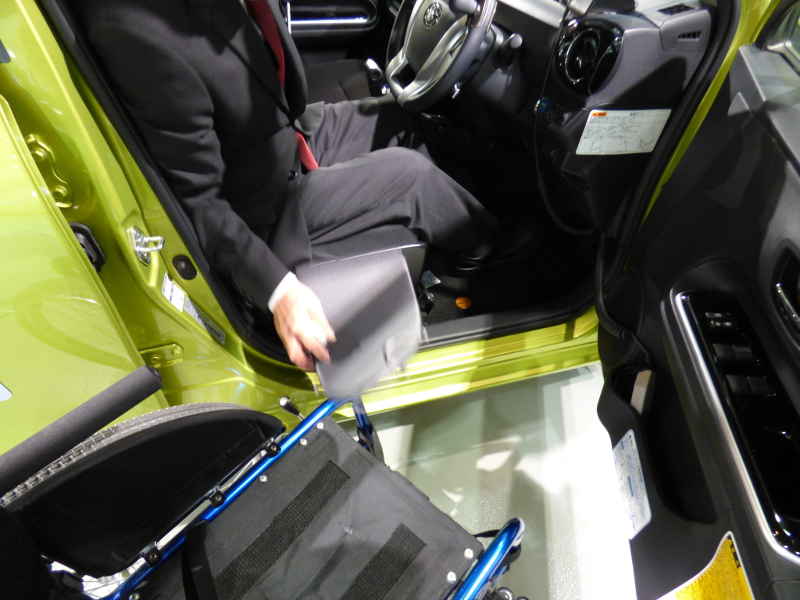
Then the driver will pull the wheelchair close to the vehicle, use a remote controller to lower the hanger (the yellow part seen on the photo image) and hook the band attached to the wheelchair.

The driver will operate the remote controller to draw up the hanger. Then the wheelchair will be hanged by the band, folded, fit into the container like an upside-down boat, fixed and stored on top of the roof together with the container.

Isn’t it wonderful that persons with such physical conditions to which a vehicle like this fits are able to utilize their body capability to drive while getting help by equipment? Hopefully this vehicle will bring not only driving but also enjoyable outing with peers. Special thanks to the person in charge, who gave the explanation and the demonstration.
Oedo-Onsen-Monogatari
The arrival to this place was around 7 PM on Sunday.
The time seemed to be around the exiting peak; nearly all the counters were used for exit. At each counter 15 to 20 guests were standing in line. A few counters were used for entry. Entering guests formed a single line for about 25 minutes of waiting time. About 40 percent of the guests looked like tourists from overseas. Just after entering the facility, guests change into rental light cotton Kimonos. It appears walking in a wheelchair inside the building is possible, though it was relatively crowded at that time. There are shops of ball-scooping and shooting games, with some atmosphere of a Japanese temple festival or carnival [the photo images are a little blurred]. It is also possible to watch the street performance events on Saturdays and holidays.
As for the indoor baths, it is necessary to climb up stairs to get in the hot spring bath, which is installed at the height of about 1 meter. As for the outdoor baths, each entrance of the baths is equipped with a hand rail and the floor is of a rocky style design. There is some risk of falling. It seems necessary for people requiring some assistance or equipment like a hand rail or a cane in daily life to have far more careful support such as a couple of extra care givers. There are two outdoor baths. At the time of our survey visit, guests from overseas were speaking a variety of languages while enjoying the baths, which brought about a curious atmosphere as if we were not in Japan. Around 9 PM, the queue in front of each exit counter was like two guests or a group of guests, so it didn’t take much time to exit.
Conclusion
This post reported some of the impressive facilities which can be seen only in Odaiba. Accessible members hope to continue the study and investigation of the facilities including those viewed in this field work and to deliver the information. If you are interested, please join the Japanese Red Cross Language Service Volunteers and participate in Accessible Activities. We hope to hear from you.

